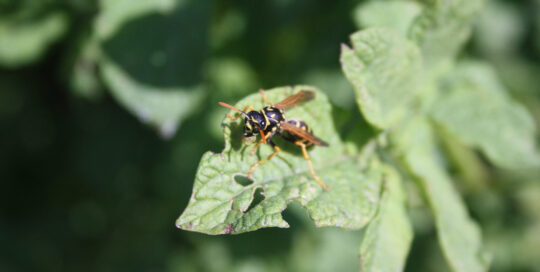How to Grow Bug-Free Cabbage
Views: 12869

We’re having a cabbage growing contest with our homeschool group this year. I started the Late Flat Dutch variety, which grows to 10-15 pounds, and gave them to the kids this spring. Towards the end of summer, we’ll get together to see who has the heaviest cabbage, the cabbage with the largest circumference, plus the prettiest specimen. Of course, bug-free cabbage only.
Whether you’re vying for the blue ribbon in a gardening contest, or would rather not have to deal with the consequences of cabbage pests, here are a few ways to grow bug-free cabbage.
Start at the Soil Level
The first time cabbage is vulnerable in the season is when it’s first planted. Cutworms enjoy chewing the stems at the soil level, effectively killing the seedlings.
If I’m setting cabbage out early, I’ll often put yogurt containers or one-gallon pots with the bottom cut out around the plants in an attempt to shield them from the caterpillars. I’ve also read that you can plant sunflowers near your cabbage and other brassica plants, because sunflowers are a favorite meal to cutworms, although I’ve never tried it. (But I must say, I haven’t had any issues with cutworms in this garden, and the beds are filled with volunteer sunflowers. Maybe there is something to that.)
Add a Floating Row Cover
More people have trouble with bug-free cabbage after the plants is off and growing. There are a number of moths that flit around and lay their eggs on the plants. If you can do it, the most effective way to keep them free of the subsequent caterpillars is to maintain a barrier between the plant and the moths with the floating row cover. Install drip irrigation so you don’t have to raise the fabric to water, and you should be good until it’s time to harvest.
Apply Diatomaceous Earth for Bug-free Cabbage
I’ve had good luck using diatomaceous earth if I end up with the cabbage moth larvae, plus you can use products with Bt such as Thuricide. With the organic means, you’ll have to reapply the products after a rain or using the sprinler. Or for heavy duty measures look for products with carbaryl, permethrin, or esvenfalerate.
Earwigs are a huge issue for us. I have to say, it makes me want to pull out my hair when I sometimes read that they don’t cause much damage. Growing corn is a major problem for us, primarily because of earwigs, and they make a total mess in the cabbage. They chew through the leaves, defecate in between them, and by the time I cut away the bad parts my monster cabbage is pretty pathetic.
I usually resort to diatomaceous earth. I’ll sprinkle it around the hopefully bug-free cabbage, as well as on it. When you use it, be sure to wear a mask. Although I’ve heard of some people eating it (I certainly haven’t!), you don’t want to breathe it into your lungs. This year I’m also going to put Tree Tanglefoot insect barrier on strips of wood that I’ll set around the cabbage patch. When they try to crawl over this glue-like substance that doesn’t dry out, because thankfully earwigs can’t fly, it’ll capture them.
I really like this concept, and even want to try it around our little patch of popcorn.
Cabbage are really easy and a lot of fun to grow. If you feed and water them regularly, and employ a few techniques to keep the bugs off of them, you can end up with a champion bug-free cabbage.
Meet Amy Grisak
Amy is a freelance author and photographer in Great Falls, MT who specializes in gardening, foods, and sustainable agriculture. She provides information on every kind…
Amy's Recent Posts

Looking into the Crystal Ball for a Pest Report








